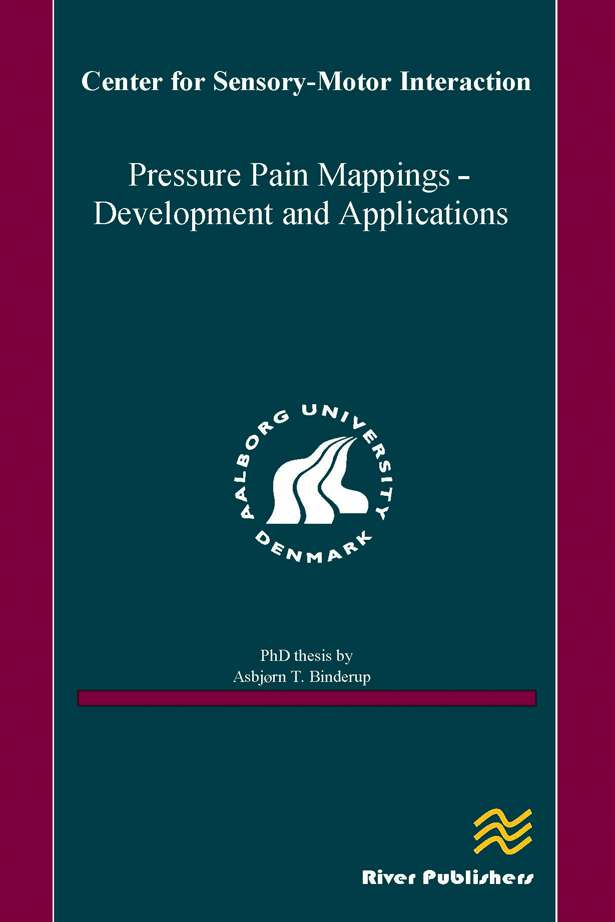River Publishers Series in
Pressure Pain Mappings - Development and Applications
Author: Asbjørn T Binderup, Dept. of Health Science and Technology, Aalborg University
e-ISBN: 9788792329912
Available: December 2011
Musculoskeletal disorders (MSD) are a major problem resulting in loss of work ability for the individuals and are an economical burden for society. While methods like magnetic resonance imaging and ultrasound are adequate for visualizing bones and muscles, these methods do not provide any information of the changes in deep structure sensitivity to pain. A new method aiming at directly measure and visualize pain spatial changes can be a way to localize painful areas.
The pressure pain threshold (PPT) is the minimum required mechanical pressure at which a person feels a sensation of pain from a certain location. This provides a semi-objective meas-urement of pain providing a quantifiable value of pain sensitivity. By covering the surface of a muscle using a high number of measurement locations it becomes possible to generate a PPT map visualizing the pain topography of the muscle. The presented studies (I-II) cover the development of methods to generate the PPT maps as well as a way to cluster the PPT measurements to investigate possible distinct areas of sensitivity within the same muscle. Further, healthy men and women have been mapped to investigate differences in PPT and to-pography between genders in the low back and neck-shoulder region (III).
Further, delayed muscle onset soreness was induced in the shoulder region among healthy volunteers to assess spatial changes in presence of soreness (IV). PPT maps showed a lower-ing of PPT in presence of pain/soreness in line with anatomical (sub-divisions of the trapezius muscle) and clinical findings (upper trapezius being more sensitive). Finally, two groups of cleaners (V) were investigated with respect to sickness leave (one with reported sickness leave and one without). The PPT maps showed a clear difference in general PPT levels be-tween cleaners with sickness leave compared with without sickness leave.
The developed methods in the low back and neck-shoulder region have proved to be effective in visualizing pain topographic information (I-V). Further studies using PPT mapping are warranted in patient populations. These methods can be used as a way to assess the effectiveness of treatment or prevention of MSD.
